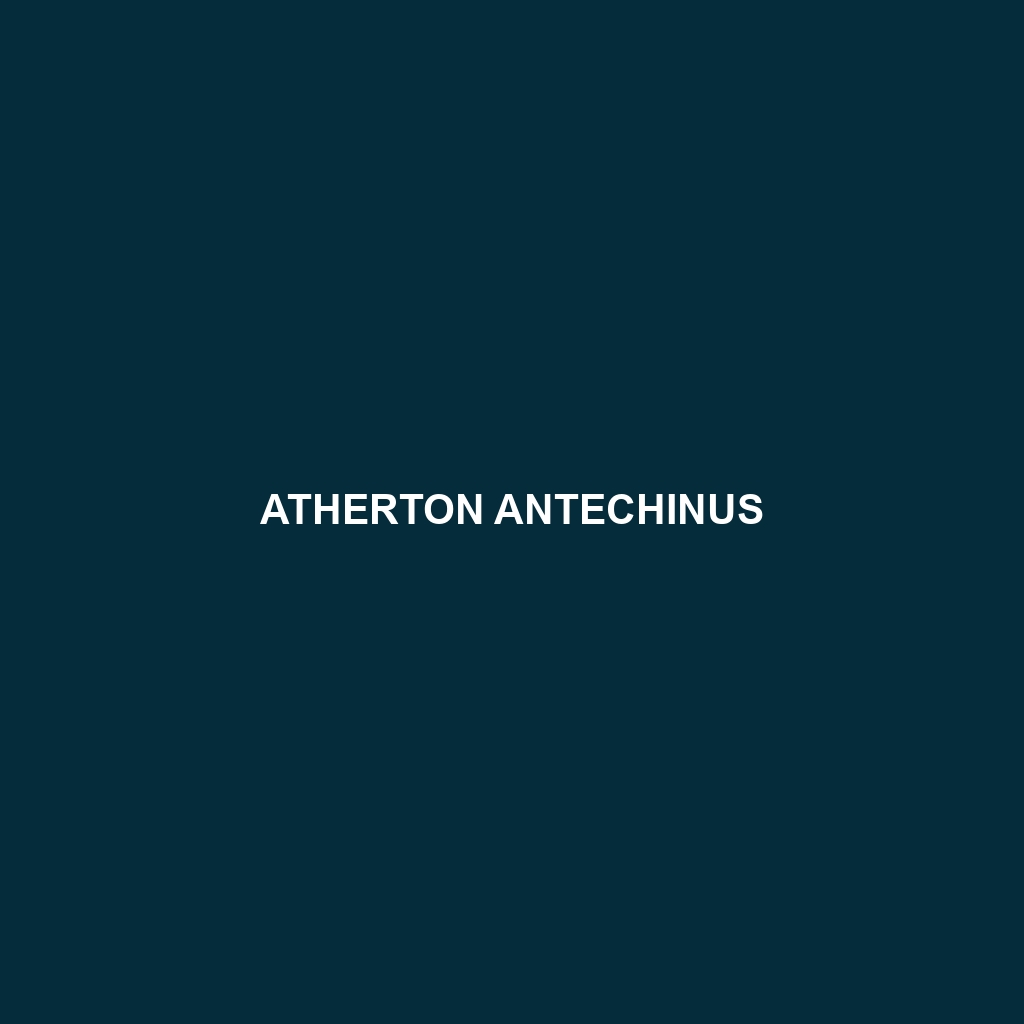Atherton Antechinus: A Comprehensive Overview
The Atherton Antechinus (Antechinus godmani) is a small, nocturnal marsupial native to the dense rainforests of northeastern Australia. Known for its energetic behavior and unique life cycle, this fascinating creature exhibits a blend of intriguing physical features and remarkable ecological roles.
Physical Characteristics
Size: Adult Atherton Antechinus typically measure between 10 to 12.5 cm in body length, with a tail length of about 8.5 to 10 cm.
Weight: They weigh approximately 30 to 60 grams, with males generally being larger than females.
Coloration: Their fur is soft and dense, usually a mix of brownish-grey on the back and a lighter grey or cream on the underbelly. This coloration provides excellent camouflage against the forest floor.
Special Features: They have sharp, curved claws suited for climbing and foraging, and sensitive whiskers that help them navigate the dark, dense underbrush of their rainforest habitat.
Behaviors
Social Interactions: Atherton Antechinus are primarily solitary animals, except during the breeding season. Males and females come together briefly to mate, after which they go their separate ways.
Feeding Habits: These marsupials are insectivorous, feeding mainly on insects, spiders, and small vertebrates. They use their keen senses to hunt during the night, often climbing trees and shrubs to find food.
Ecological Roles: As active predators, they play a crucial role in controlling insect populations, thereby maintaining the balance within their ecosystem. Their foraging activities also help in seed dispersal and soil aeration.
Habitats
Geographic Range: The Atherton Antechinus is found exclusively in the tropical rainforests of the Atherton Tableland in Queensland, Australia.
Preferred Environment: They thrive in moist, dense, and multi-layered rainforest habitats, where they can find ample food and shelter. They often take refuge in tree hollows, fallen logs, and dense underbrush.
Adaptations
Nocturnal Lifestyle: Their nocturnal habits help them avoid many predators and reduce competition for food.
Reproductive Strategy: The Atherton Antechinus has a unique and somewhat tragic breeding strategy. Males undergo a frenzied mating period, often lasting up to two weeks, during which they compete aggressively and mate with multiple females. This intense period often results in the death of many males due to stress and exhaustion, ensuring that only the fittest genes are passed on.
Thermoregulation: They can enter a state of torpor to conserve energy during periods of food scarcity or cold weather.
Conservation Status
Current Status: The International Union for Conservation of Nature (IUCN) lists the Atherton Antechinus as Least Concern, but they are potentially at risk due to habitat loss and climate change.
Threats: Deforestation, habitat fragmentation, and changes in their rainforest environment pose significant threats to their populations.
Conservation Efforts: Protection of their rainforest habitat is crucial. Conservation efforts focus on preserving the Atherton Tableland’s ecosystems and mitigating the impacts of climate change.
Fascinating Fun Facts
Short Lifespan: The Atherton Antechinus has a very short lifespan, with males often living less than a year due to their intense reproductive efforts.
Energetic Hunters: Despite their small size, they are incredibly active and energetic hunters, capable of catching prey larger than themselves.
Unique Reproduction: The synchronized breeding season and subsequent male die-off is one of the most extreme reproductive strategies in the animal kingdom, showcasing a remarkable adaptation to their ecological niche.
In , the Atherton Antechinus is a resilient and vital component of Australia’s rainforest ecosystems. Its unique behaviors, adaptations, and ecological roles make it a subject of great interest for wildlife enthusiasts and researchers alike. By understanding and protecting this remarkable marsupial, we can ensure the health and diversity of their rainforest habitat for generations to come.
